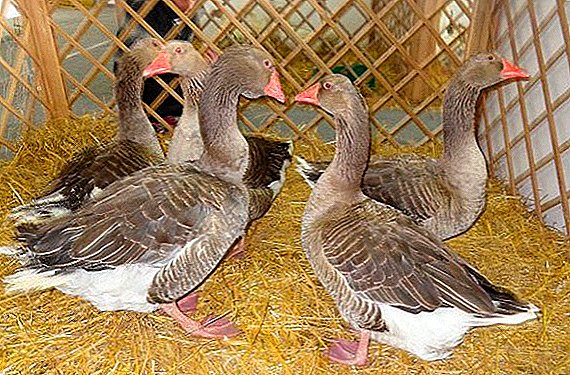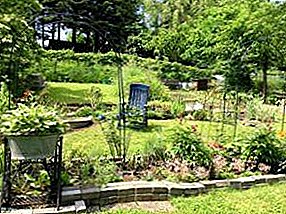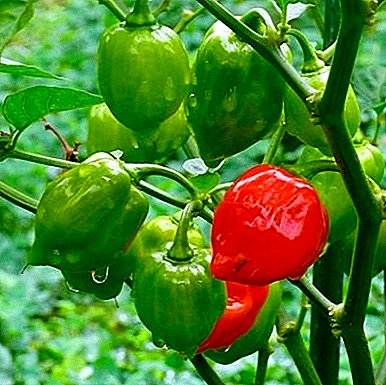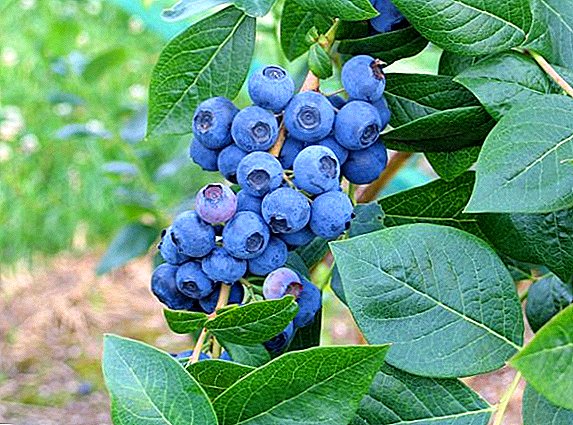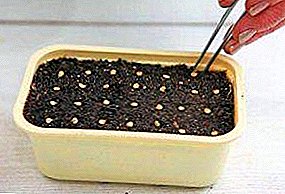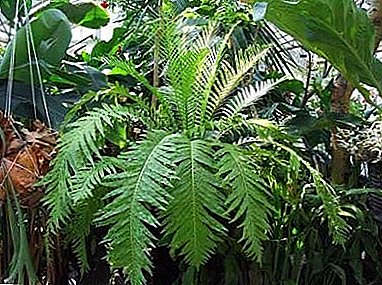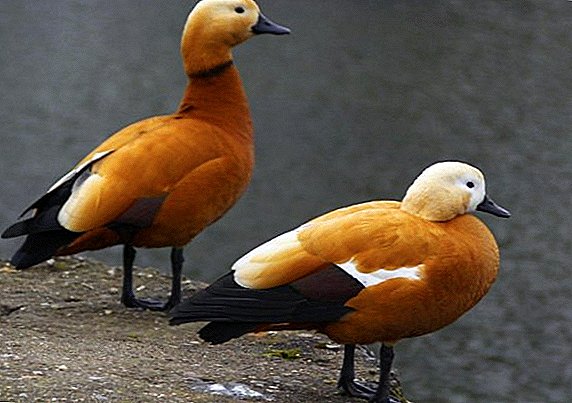 Sometimes in city ponds or in private households, beautiful ducks of unusual orange color can be found. A rather large bird attracts attention, and people often wonder about its origin and habitat. Today in the article we will tell in detail about the red duck and its breeding.
Sometimes in city ponds or in private households, beautiful ducks of unusual orange color can be found. A rather large bird attracts attention, and people often wonder about its origin and habitat. Today in the article we will tell in detail about the red duck and its breeding.
Origin and distribution
The red duck, or Ogar, is a representative of the Duck family, of the Anseriformes order. Belongs to the genus Tadorninae. The name of the genus means roughly "bright bird that swims in the water."
Did you know? At the turn of the 40-50s of the twentieth century, Ogari appeared in the reservoirs of Moscow. It is believed that at that time in the Moscow Zoo they no longer cut the wings, after which several individuals broke free and bred. Today, their population is more than 1 thousand individuals. Metropolitan red ducks winter in zoos.
The breed was bred in Western Europe, but is now rarely seen there.
It inhabits small populations in North and Northeast Africa. In Europe, the bird can be found on the west coast of the Black Sea, in the Canaries, in the Crimea, in the south of Russia and Ukraine, and loves to nest in the steppe regions of Central Asian states.  Wintering ducks fly to the south-eastern part of the European continent, to the south of India, to the south-eastern and central parts of Asia.
Wintering ducks fly to the south-eastern part of the European continent, to the south of India, to the south-eastern and central parts of Asia.
Standard and breed description
Ogar has a bright orange tinge of body plumage, on the head the feathers are white with a faint orange tint.
Familiarize yourself with the breeding features of other duck breeds: Moulard, Beijing, Bashkir, Blue Favorite, Gogol.
Fly feathers of the tail and wings of a beautiful anthracite black color, with a greenish tint. The inner part of the wing is white.
Male and female are very similar in appearance. Visually, they are easy to distinguish in the mating season: at this time, the black stripe girdles the base of the neck of the drake, and its color becomes bright.
- Torso length - up to 0.7 m;
- wing span 1.0-1.35 m;
- the mass of wild birds is up to 1.7 kg;
- home weight - 4-6 kg;
- egg production in captivity - up to 120 pieces per year;
- egg weight - 70-80 g;
- life expectancy in captivity - up to 12 years.
Important! In the diet of red ducks must be present chalk, crushed shells and gravel.
Decorative breed value
Ogar refers to the meat type. With home breeding and good nutrition, the female's weight reaches 4 kg, the drake can grow to 6.  The bird is listed in the Red Book, therefore they breed it mainly as a decorative breed. Its color is very beautiful, and the down is an excellent and lightweight thermal insulator. Ogari is also valued for its high egg production.
The bird is listed in the Red Book, therefore they breed it mainly as a decorative breed. Its color is very beautiful, and the down is an excellent and lightweight thermal insulator. Ogari is also valued for its high egg production.
Bright appearance also differs duck mandarin duck.
Breeding at home
Significant difficulties breeding Ogar is not. Females begin to tease around 6 months. In birds, the parental instinct is quite well developed, the duck most often incubates the eggs itself without any problems, so an incubator is not required for breeding. Ogaris are very kind to little ducks: the female and the male take care of them.
Owner Ogari love and reach for it. A distinctive trait of character - aggression to other species. Especially it can manifest itself as jealousy towards the owner in relation to other pets.
Nutrition and feeding
It is necessary to feed an adult bird twice a day, approximately in one time. In the diet of ducks should be present food, enriched with vitamins and minerals. At the onset of the cold season, the legume and cereal components are increased, and vegetables harvested from the summer are introduced into the menu (they are finely chopped or rubbed on a grater). About 1/5 of the ration should be protein foods (this can include any small animals - from locusts to small fish).  Ducklings from birth are fed starter feed. For the kids to grow and develop normally, they need meadow and river greens, worms and insects. If you do not want to independently collect these supplements or the ducklings were born in the winter, such bio-feed can be purchased at pet stores.
Ducklings from birth are fed starter feed. For the kids to grow and develop normally, they need meadow and river greens, worms and insects. If you do not want to independently collect these supplements or the ducklings were born in the winter, such bio-feed can be purchased at pet stores.
Did you know? One Kazakh legend says that every few centuries a puppy is hatching from an egg of a red duck by an Asian greyhound puppy. The one who finds him will always be lucky and happy in everything.
Both for adult birds and ducklings, the water in the cups should always be fresh: it is desirable to change it daily.
Bird care
When home maintenance, it is necessary to give a burnout the opportunity for normal walking. He needs a lawn and a pond - he will find food in the water and grass during the warm season.
Ogaris have sufficiently strong immunity, however, for the prevention of viral hepatitis, they need vaccination. In the duck should regularly change the litter, to monitor the presence of fresh water.
It is useful for novice poultry farmers to learn how to distinguish duck from drake.
Conditions of detention
Ogaris do not like to live in large flocks even in their natural habitat - they make an exception only during the molting period, huddling in larger flocks than in usual time. In captivity, they prefer to live in pairs.  Access to the reservoir and meadow grass is a prerequisite for the reproduction of offspring. After reaching the age of two, Ogari will form pairs for several years. For one such pair, an aviary area of 1.5-1.7 square meters is needed. m. In the aviary is best to make a house of plywood, the cell size for one individual (D / W / H) - 0.4 / 0.4 / 0.4 m.
Access to the reservoir and meadow grass is a prerequisite for the reproduction of offspring. After reaching the age of two, Ogari will form pairs for several years. For one such pair, an aviary area of 1.5-1.7 square meters is needed. m. In the aviary is best to make a house of plywood, the cell size for one individual (D / W / H) - 0.4 / 0.4 / 0.4 m.
Learn how to make a pond for ducks and geese with your own hands.
The floor is lined with sawdust and straw. If there is no reservoir nearby, you can build a small artificial pool with your own hands.
For chicks, the floor of the room is moistened: for these purposes, put wet sacking or sackcloth on the floor, and on top - straw with sawdust.
In the cold season, orange birds migrate to a warm room. On the floor should be a layer of straw and sawdust, the air temperature - from + 7 ° C and above.  Ogar is a beautiful original duck that stands out from the crowd by its bright plumage. If you want to diversify and decorate the look of your bird livestock, start at least a couple of such birds to start at your farm.
Ogar is a beautiful original duck that stands out from the crowd by its bright plumage. If you want to diversify and decorate the look of your bird livestock, start at least a couple of such birds to start at your farm.
Important! In the mating season, in order to avoid the loss of the breed, the ogar must be isolated from other ducks.
In addition, their high egg production does not allow to call the breed only decorative: these are more than a hundred large eggs per year.



